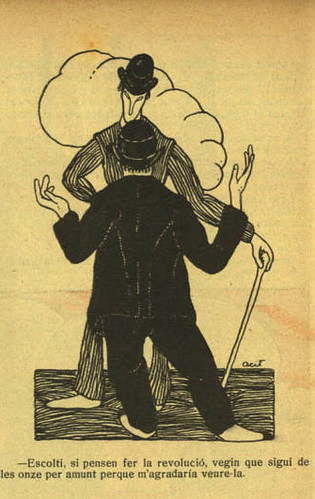"Long live the Virgin Mary! Death to the current regime! Long live the king
and the monarchy and Segura the Cardinal, the undefeated general
of our brotherhood!"
Origin: La Traca (Valencia), 29 August 1931
Purpose: Ezquioga is a small rural town in the Basque Country where the people are fighting against the republican ideas in the belief of saving the Catholic ways.
Value: The cartoon shows the people ready to defend their town, with a gun in hand and fists up in the air. The people are older, possibly suggesting that it was the older generation who were more conservative and pro-monarchy. Furthermore, the setting is clearly a very rural area, which correlates with the idea that the rural communities wanted to preserve the monarchy whilst the industrial cities were pro-republic.
Limitations: It is somewhat unclear whether the people are heading towards or away from the town and furthermore, this cartoon comes from Valencia, a city, where the view may be bias toward the depiction of this town and the Basque people.
Question: From what we've learned about the Basque people so far, why would they be pro-monarchy?







